
|
|
|
|
|
|
|
2044
The works of J.R.R. Tolkien enter the public domain
Copyright law has remained largely unchanged over the years. Accordingly, the English writer J.R.R. Tolkien's books and writings – including his famous Lord of the Rings trilogy and The Hobbit – are entered into the public domain on 1st January 2044. The law states that this occurs "at the end of the period of 70 years from the end of the calendar year in which the author dies", which in this case was 1973.*
A work entering the public domain means that anyone is free to do whatever they want with it. Film and stage adaptations, re-prints, assorted varieties of fanfiction, video games and much more besides, can all be created, for profit, without the approval of the Tolkien Estate. Lord of the Rings had regularly appeared in lists of the most read books of all time.

The last veterans of WW2 are passing away
During this decade, the last surviving veterans of World War II are passing away. A small number of them reach their 120th year, allowing them to attend the 100th anniversary commemorations of D-Day, on 6th June 2044. On this date, a time capsule is opened at the American Cemetery at Colleville-sur-Mer, close to the site of the Normandy landings which claimed so many lives. This contains press articles from the time – including a message from President Eisenhower to future generations.*

A transglobal highway and rail network has emerged
Midway through the 2040s, practically all major continents are connected to each other by road, rail and tunnel. This transglobal highway, as it comes to be known, was never a definite goal nor an individual project. It was instead formed by long-term, incremental steps, as countries around the world reached across their borders and waterways to formerly distant neighbours. Over the years, from the mess of highways and railways criss-crossing the globe, a specific route began to emerge, uniting every populated continent with the exception of Australia.*
Arguably one of the first steps in this process was the Trans-Siberian Railway, which began construction in 1890. This was a network of railways connecting Moscow with the Russian Far East and Sea of Japan. It became the world's longest railway, stretching 9,300 km (5,800 mi), with expansion continuing more than a century later.*
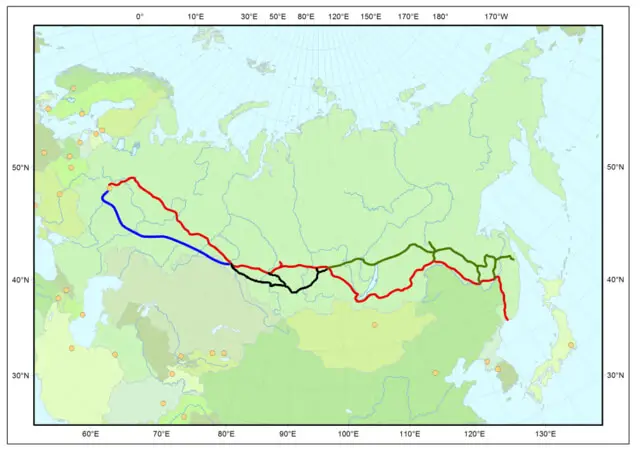
Another major transport network to emerge during the 20th century was the Pan-American Highway. This linked the mainland nations of the Americas – extending from Prudhoe Bay in Alaska to the lower reaches of South America.* With a total length of 48,000 km (30,000 mi), it became the world's longest "motorable road". However, because of the Darién Gap, it was not possible to cross from Central America to South America by traditional motor vehicle.
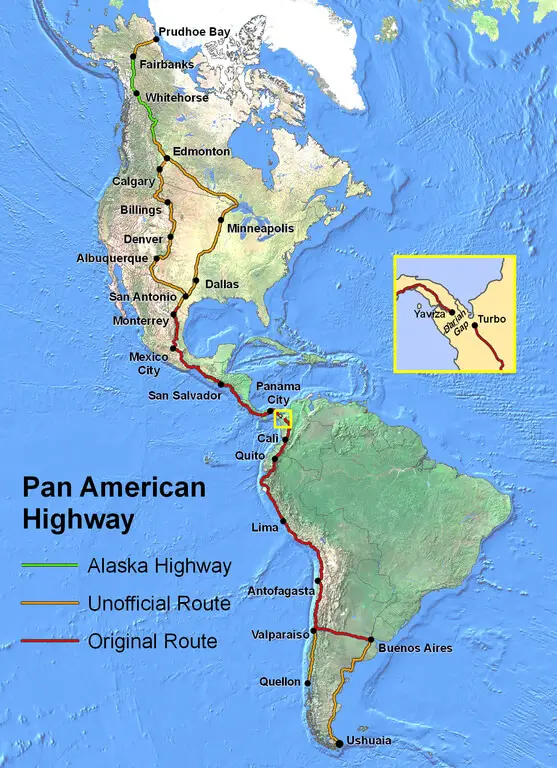
The Channel Tunnel (an idea first proposed in 1802), was officially opened in 1994. This provided the first direct physical link between Britain and mainland Europe since the Ice Age. This megaproject included the longest undersea portion of any tunnel in the world, at 37.9km (23.5 mi) in length.*

In 2000, the Øresund Bridge was completed.* This became the longest combined road and rail bridge in Europe and connected the major road networks of Scandinavia to those of Central and Western Europe. It was followed by the Fehmarn Belt Fixed Link, providing a more direct route from Germany to Sweden and Norway.*
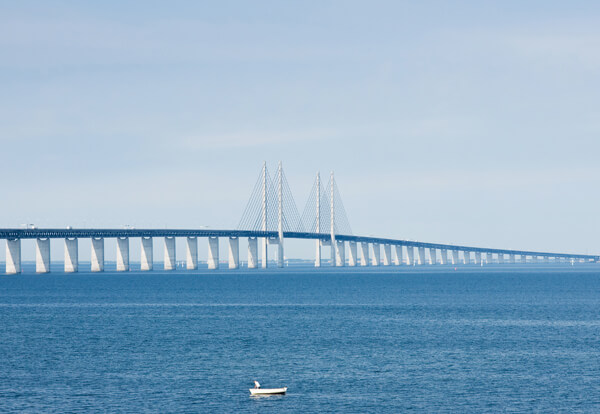
By the 2020s, several major new connections were being completed around the world. One notable project was the Sunda Strait Bridge, linking the Indonesian islands of Sumatra and Java.* This crossing utilised islands in the strait as stepping stones. It carried a six lane highway and a double-track railway and cost upwards of $12bn. The most extensive portion – a suspension bridge – had a central span of 3,000 m (9,800 ft), making it the second longest suspension bridge in the world at the time.
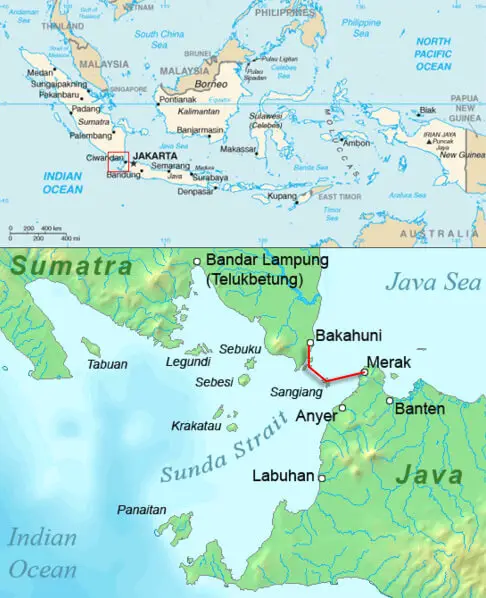
By 2025, another major link was completed – this time in the Mediterranean. The Strait of Gibraltar Tunnel had been in the planning stages for decades, but in the mid-2010s it finally got off the ground. Negotiations between Spain and Morocco were drawn out, but an agreement over costs and economics was finally reached. Building the tunnel posed serious engineering challenges, mainly because of the deep seabed found in the strait: around 300 metres in the shallowest areas. A car tunnel was ruled out, since removing exhaust fumes from that depth proved infeasible. The engineers behind the project also determined that, in order to graduate the slope, the entrances on either side would need to be almost 3km away from the coast. Despite rising costs, the project continued to move forward, construction technology overcame the structural challenges, and, midway through the 2020s, the first trains made the journey from one continent to another.*
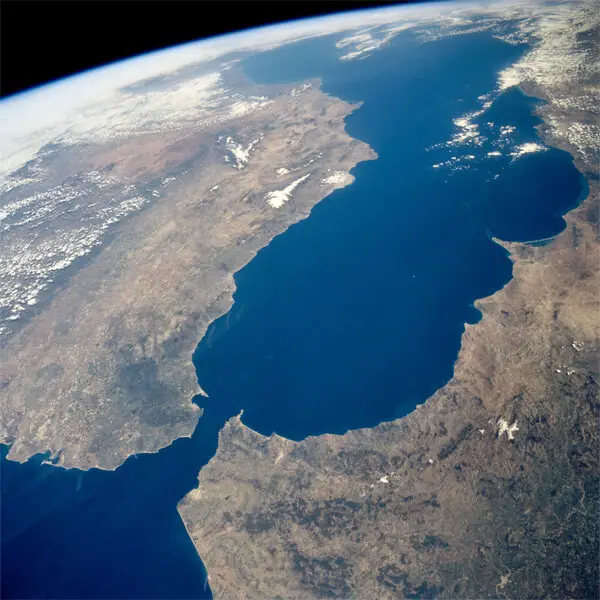
Meanwhile, road and rail projects were growing outwards on both sides, with new routes expanding through Africa and existing routes being strengthened in Western Europe.* The 2020s also saw development of a bridge linking Africa with the Middle East.*
As it became more developed, China greatly expanded its infrastructure, with hundreds of miles of railtrack being added each year.* Major new transport links began to unify Southeast Asia as a whole. In the 2030s, Japan was connected to the mainland by rail for the first time. This was achieved via the new Sakhalin–Hokkaidō Tunnel, running between the Japanese island of Hokkaidō and the Russian island of Sakhalin. A shorter tunnel connecting Sakhalin to mainland Russia had been completed years before which, coupled with the new 42 km long rail tunnel, opened new trade routes between Japan and continental Asia. Like Gibraltar, many issues had to be overcome, primarily political ones. For years, there was debate as to the economic usefulness of the tunnel, until the demand for such a crossing manifested itself, at which point it was finally agreed that construction would be productive.* Thanks to the long-existing Seikan Tunnel, all four of the main Japanese islands were then connected to Russia.
Another huge project of this time was the Malacca Strait Bridge.* This connected Sumatra (the largest island entirely within Indonesia) to western Malaysia and mainland Asia, with a sea-crossing bridge spanning almost 50 km (31 miles). Combined with the Sunda Strait Bridge (see above), this greatly expanded the Indonesian economy – providing new markets and access to China.
By the 2040s, Japan saw completion of its second mainland connection, this time between it and South Korea. This project had by far the most problems of any major link, due to the differing political and cultural climates of the two countries. Trade and travel necessity ultimately pushed the project along, after considerable delays.*
One of the most ambitious of all the transglobal highway projects – the Bering Strait Crossing – was also completed early in this decade. A joint venture between Russia and the United States, it was the first direct infrastructure link between the two countries. It would consist of three tunnels, connecting the continents via the Diomede Islands.* During its development, rising global temperatures actually benefited the project, having made construction easier in the warming Siberian landscape. Coupled with the crossing was a series of road and rail projects branching out through Eastern Russia – eventually joining up with China, Japan and all the way through to Europe. In other words, it was now possible to board a train in London and travel directly to New York City, via Moscow and Yakutsk.*
Ironically, the last connection of the transglobal highway to be completed was actually the shortest. For decades, the Darién Gap in Panama, a near-impenetrable wall of jungle and brush, had blocked road connections between North and South America. Demand was slow to materialise for the connection, and environmental protection prohibited a land crossing. In the early 2040s, a compromise was reached, as the influx of climate change refugees from drought-stricken South American countries demanded an easy path northwards. A bridge was constructed across the Gulf of Urabá between Panama and Columbia, bypassing the Darien Gap.*
By 2044, people can travel to all corners of the globe using direct road or rail links. However, geopolitical stresses are beginning to slow the expansion of new connections. Resource wars have made the opening and closing of national borders increasingly frequent and unpredictable, at times cutting off sections of the network. Despite this, it continues to be largely operational as a whole, due to its sheer size and extent. In a world wracked by environmental catastrophe, it serves as a lifeline for many countries – since food, water, metals, minerals and other natural resources can be easily and quickly moved from more prosperous regions. Although the transglobal highway is stagnating in growth, it remains a vital piece of infrastructure for decades to come.
« 2043 |
⇡ Back to top ⇡ |
2045 » |
If you enjoy our content, please consider sharing it:
References
1 Copyright, Designs and Patents Act 1988, The National Archives:
http://www.legislation.gov.uk/ukpga/1988/48/section/12
Accessed 23rd April 2017.
2 Normandy American Cemetery and Memorial, Wikipedia:
http://en.wikipedia.org/wiki/Normandy_American_Cemetery_and_Memorial
Accessed 18th December 2009.
3 Proposal for a Trans Global Highway,
by Frank Didik:
http://www.transglobalhighway.com/
Accessed 29th March 2012.
4 Trans-Siberian Railway,
Wikipedia::
http://en.wikipedia.org/wiki/Trans-Siberian_Railway
Accessed 29th March 2012.
5 Pan-American Highway,
Wikipedia::
http://en.wikipedia.org/wiki/Pan-American_Highway
Accessed 29th March 2012.
6 The Channel Tunnel infrastructure,
EuroTunnel Group:
http://www.eurotunnelgroup.com/uk/the-channel-tunnel/infrastructure/
Accessed 29th March 2012.
7 Øresund Bridge,
Wikipedia::
http://en.wikipedia.org/wiki/%C3%98resund_Bridge
Accessed 29th March 2012.
8 Fehmarn Belt Fixed Link,
Wikipedia::
https://en.wikipedia.org/wiki/Fehmarn_Belt_Fixed_Link
Accessed 5th January 2020.
9 Sunda Strait Bridge,
Wikipedia::
http://en.wikipedia.org/wiki/Sunda_Strait_Bridge
Accessed 29th March 2012.
10 Strait of Gibraltar crossing,
Wikipedia::
http://en.wikipedia.org/wiki/Strait_of_Gibraltar_crossing
Accessed 29th March 2012.
11 "The aim is to ensure that progressively, and by 2050, the great majority of Europe's citizens and businesses will be no more than 30 minutes' travel time from this comprehensive network."
See FUTURE OF TEN-T - CONNECTING EUROPE, Trans-European Transport Network, European Commission:
http://ec.europa.eu/transport/infrastructure/tentec/tentec-portal/site/en/connectingeurope.html
Accessed 3rd January 2018.
12 Bridge of the Horns,
Wikipedia:
https://en.wikipedia.org/wiki/Bridge_of_the_Horns
Accessed 29th March 2012.
13 China Expands Its Investment in Rapid Transit, Paving Way for Future Urban Growth,
The Transport Politic:
http://www.thetransportpolitic.com/2010/05/13/china-expands-its-investment-in-rapid-transit-paving-way-for-future-urban-growth/
Accessed 29th March 2012.
14 Sakhalin–Hokkaidō Tunnel,
Wikipedia:
http://en.wikipedia.org/wiki/Sakhalin%E2%80%93Hokkaid%C5%8D_Tunnel
Accessed 29th March 2012.
15 Malacca Strait Bridge, Wikipedia:
https://en.wikipedia.org/wiki/Malacca_Strait_Bridge
Accessed 3rd January 2018.
16 Japan–Korea Undersea Tunnel,
Wikipedia:
http://en.wikipedia.org/wiki/Japan-Korea_Undersea_Tunnel
Accessed 29th March 2012.
17 Bering Strait crossing,
Wikipedia:
http://en.wikipedia.org/wiki/Bering_Strait_bridge
Accessed 29th March 2012.
18 Could a Russia-US rail tunnel be built?,
BBC::
http://www.bbc.co.uk/news/world-15387714
Accessed 29th March 2012.
19 Darién Gap,
Wikipedia:
http://en.wikipedia.org/wiki/Dari%C3%A9n_Gap
Accessed 29th March 2012.
![[+]](https://www.futuretimeline.net/images/buttons/expand-symbol.gif)






